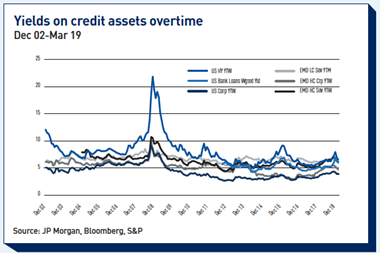Multi-asset funds face years of trying to win back institutional investment clients after a decade of wrong turns, according to a panel of trustees, fund managers and consultants.
In a discussion, hosted by data provider Camradata, institutional investors pointed to where the funds had failed them since the financial crisis – and what their managers would have to do to win back confidence.
John Arthur, senior consultant at MJ Hudson Allenbridge, said it had been a “tough few years” for diversified growth funds (DGFs), another term for multi-asset strategies.
“A long bull market in equities since the global financial crisis has made clients wonder whether to keep faith with DGFs,” said Arthur. “A basic equity/bond allocation would have done a better job than most.”
The ethos of DGFs is to offer a wide range of assets that all react differently to market movements. Some will move up while others move down, theoretically offsetting losses.
However, with equity markets being artificially supported by quantitative easing and bond markets finding favour with yield-hungry investors, the fundamental DGF process has often failed in the past 10 years, as loss-offsetting has not been needed.
Yet, despite poor performances, Arthur said he valued the diversification these funds brought to institutional portfolios: “In many UK pension funds, a DGF is the only bit of the investment that can be used to express asset allocation decisions in a timely fashion.”
However, some managers’ reliance on diversification – and a failure to use this opportunity to make dynamic investment decisions – was cited as one of the reasons for some investors’ disenchantment with the strategy.
Steven Crane, a trustee for a small, open defined benefit scheme that has switched several of its managers in the past seven years, said some of its DGFs focused too much on diversification instead of tracking the equity market when it made sense, for example.
Crane’s scheme was “wary of pulling the trigger now” and moving back into DGFs, he said, with the sponsor’s priority being low-volatility, low-risk return streams.
The panel agreed that DGFs could help deliver lower volatility to an investment portfolio as a whole.
Overall, the participants said the current mood could take another five years to change, with the onus falling on consultants to help clients decide which type of DGF might help them in the future.
However, this has become a complex task, as the universe now contains more than 100 DGFs, up from 20 a decade ago, according to Arthur.
The white paper is available to download here.









No comments yet